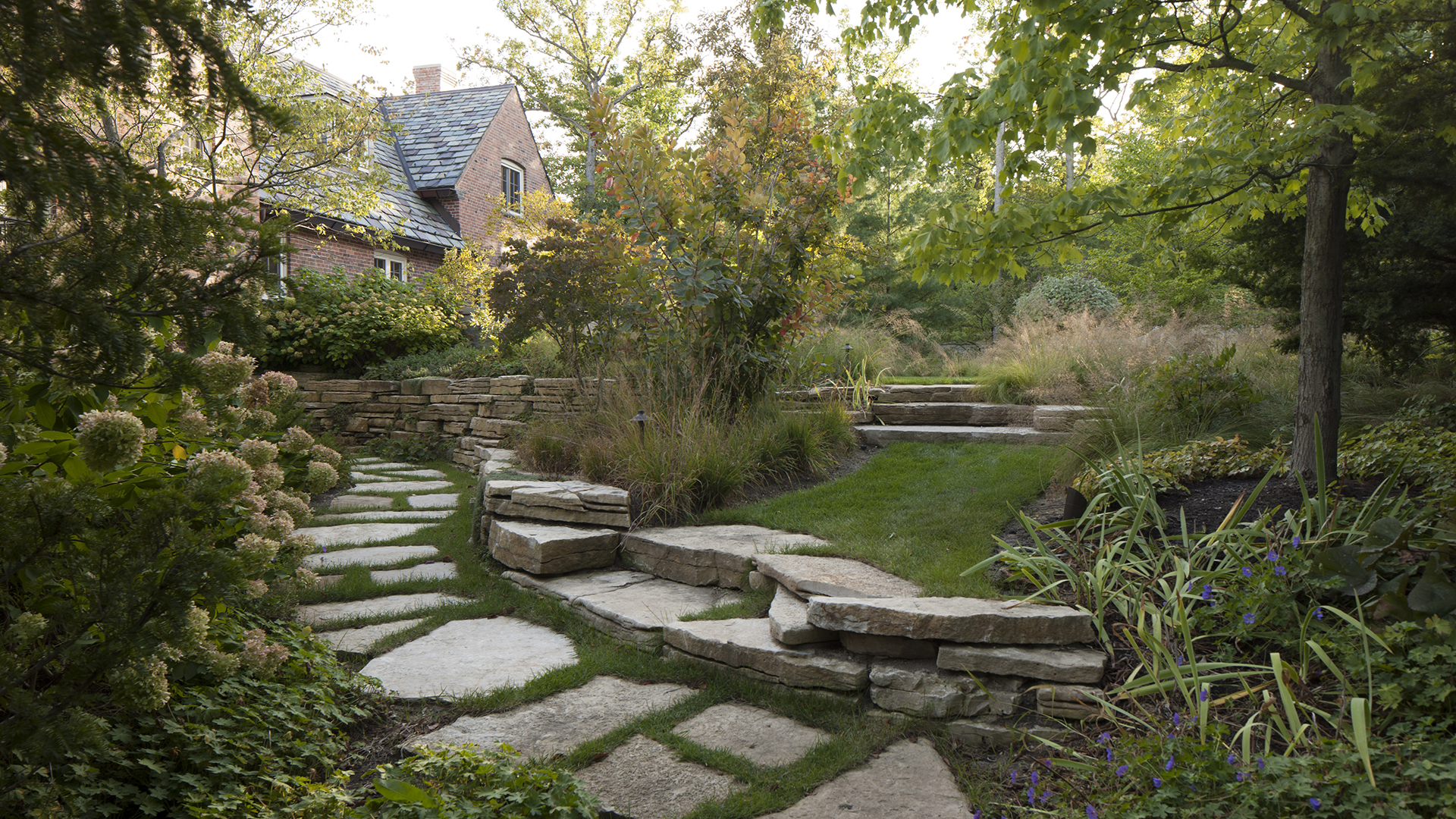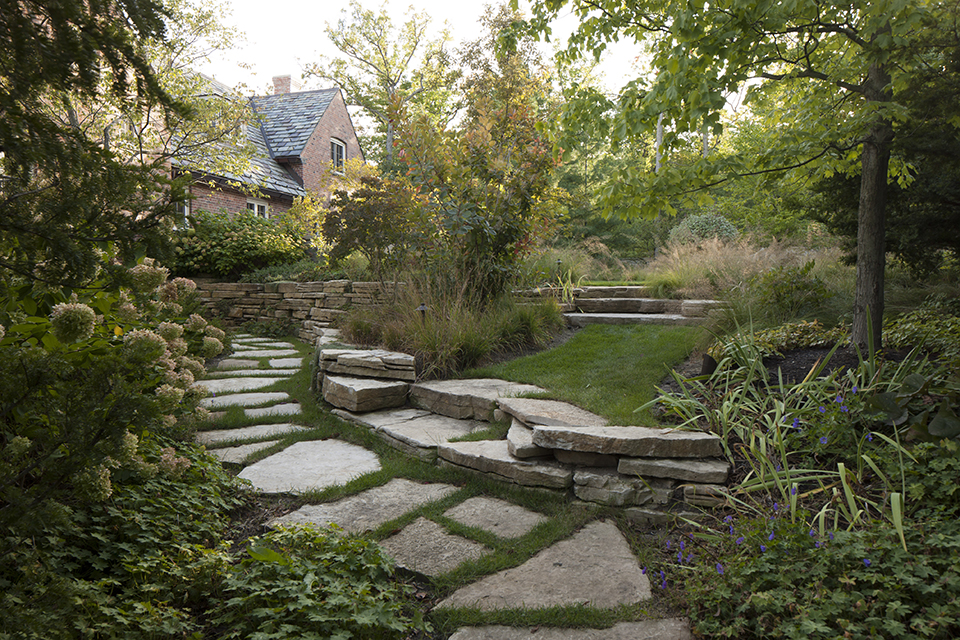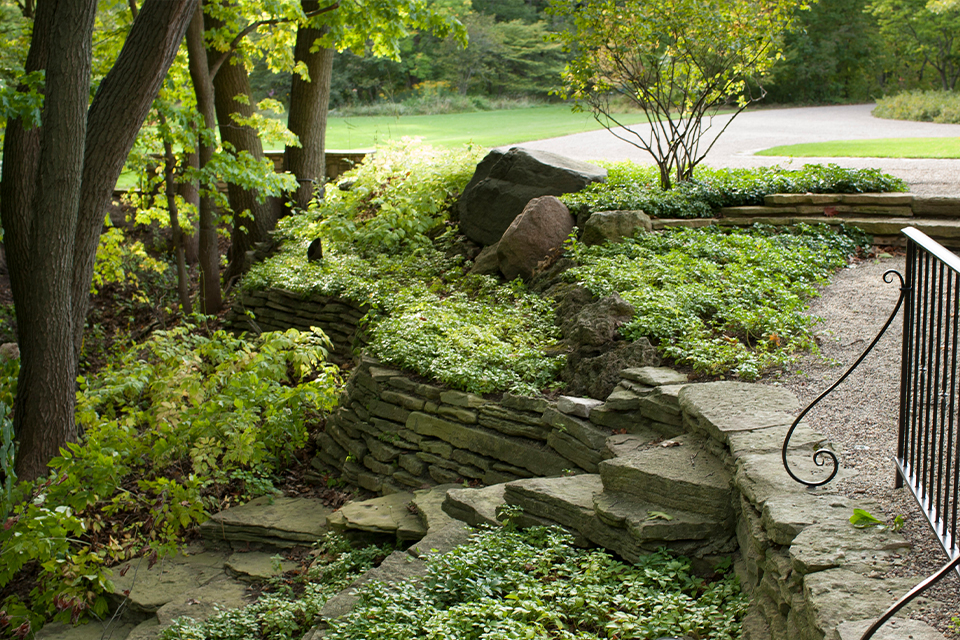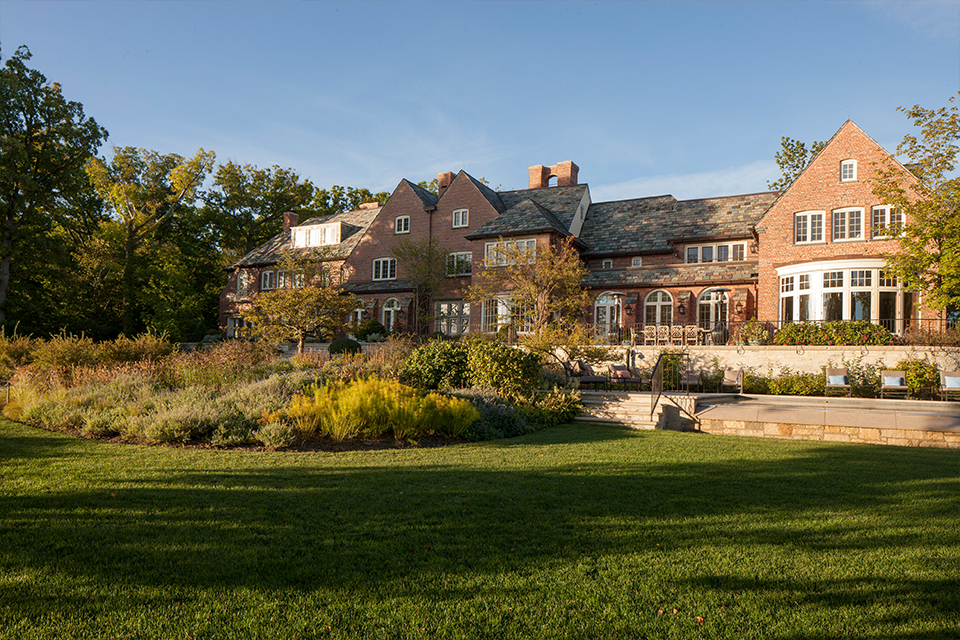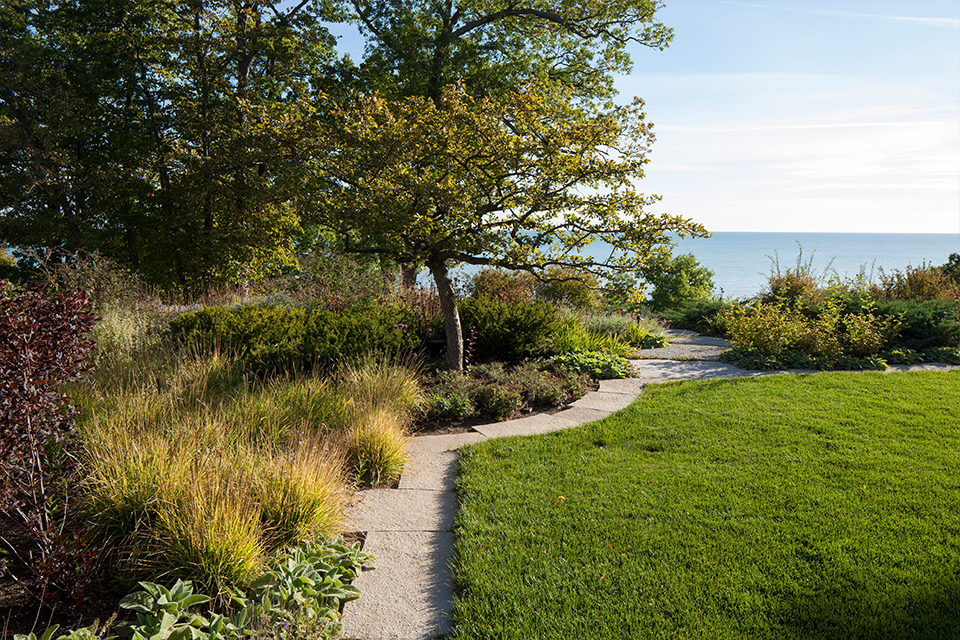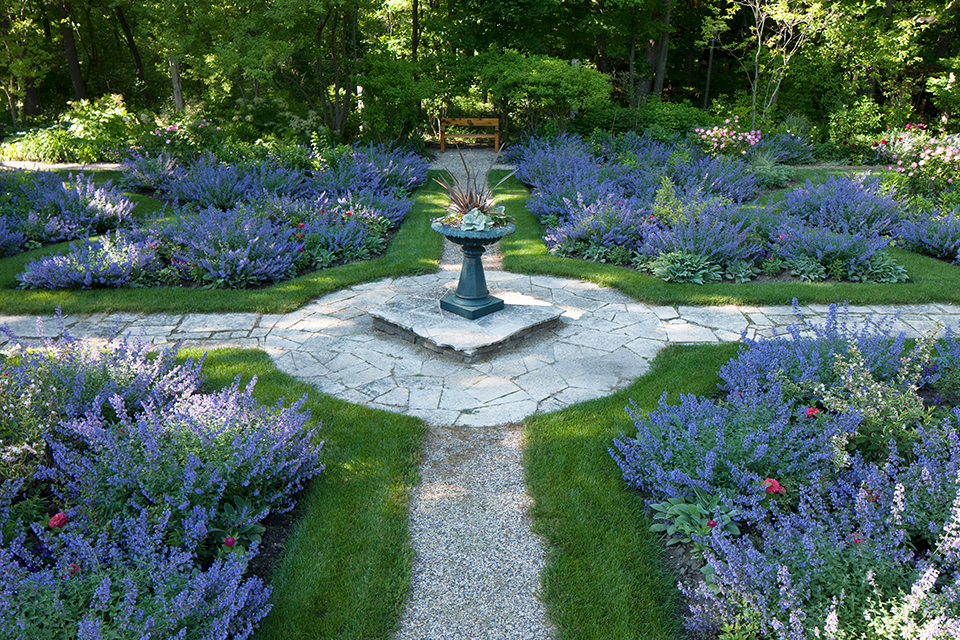Sited in the northeast corner of a 20-acre site on a bluff above Lake Michigan, this Tudor Revival house was designed in 1920 by architect Howard Van Doren Shaw for Chicago businessman Abraham G. Becker. Landscape architect Jens Jensen designed the Prairie-style grounds with his protégé Marshall Johnson. A long, rockwork-lined entry drive skirts the northern boundary, winding gently through an oak, hickory, and evergreen forest and over a stone bridge designed by Jensen. The house, bordered by flower beds and low shrubs and framed by two mature maples, looks westward onto a long meadow edged by hawthorns and sugar maples. Around the house, Jensen created a formal lawn with a stone council ring – a circular gathering place that goes back to the early tribal rituals of many cultures – and reflecting pool. At a later date, a tennis court was carved from the woods between the drive and long meadow.
Background
The southern portion of the property comprises a marsh and deep ravine, around which Jensen created a meandering path descending to the beach, adorned with native woody plants, rustic bridges and naturalistic stone outcroppings. The beach planting palette includes willows, cottonwoods, and cattails among the dune grasses. A secondary path leads south to a formal, walled garden with flagstone paths and an apple orchard. As noted by landscape historian JoAnn Nathan, the landscape surrounds the house but exists as a totally separate entity; here, as elsewhere, Jensen was not interested in creating unity between the building and the landscape.
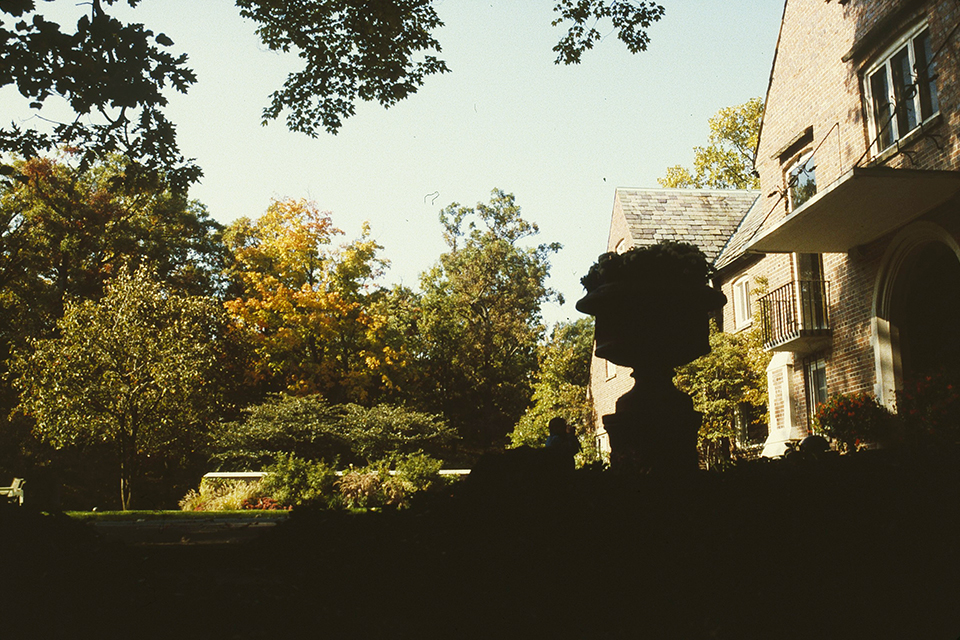 Becker Estate, Highland Park, IL, 1993. Photo by Charles A. Birnbaum, courtesy The Cultural Landscape Foundation.
Becker Estate, Highland Park, IL, 1993. Photo by Charles A. Birnbaum, courtesy The Cultural Landscape Foundation.
The estate was listed in the National Register of Historic Places in 1984; by this time, there had been some changes to the landscape, but the essence of Jensen’s work remained. A 1987 article in Historic Illinois by Susan Benjamin describes the Becker Estate as “the last unthreatened large private estate in the Chicago area that retains the meadow, one of Jensen’s most important design hallmarks.” Jensen is lauded as the “spiritual leader” of the Prairie Style and “arguably second only to Olmsted in the evolution of American landscape architecture.” Between 1988 and 1998 many elements of the landscape were restored with the guidance of landscape architect and Jensen expert Stephen Christy, including the council ring, reflecting pool, and walled formal garden.
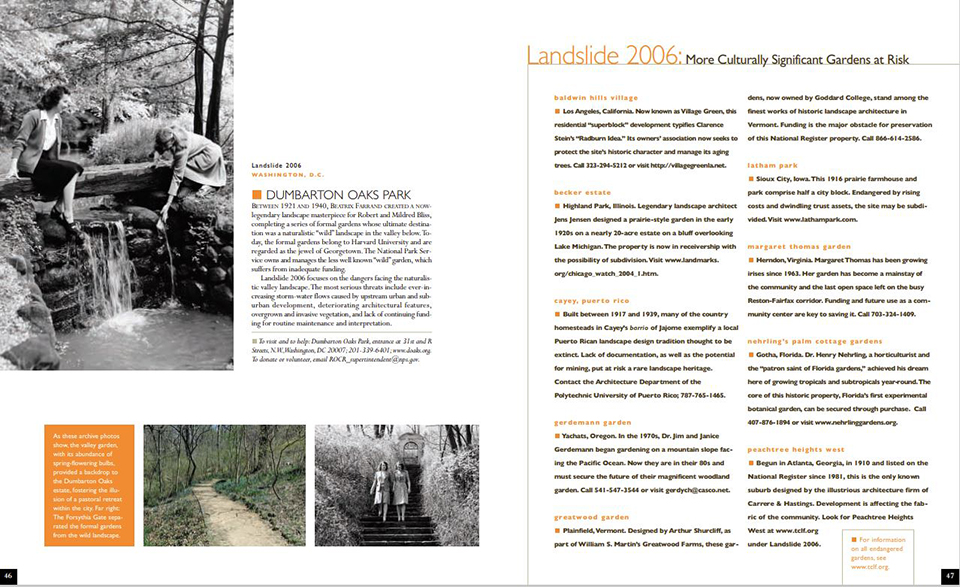
Saving America’s Garden Heritage, Garden Design, June 2006.
Advocacy and Engagement
Development pressures led TCLF to enroll the Becker Estate in 2006 in its second Landslide report and exhibition, Spotlight on the Garden, which brought attention to gardens at risk throughout the country that were designed by some of America’s most significant landscape architects. With properties in the Lake Michigan area increasingly sought after by developers, Becker Estate was at risk of subdivision. TCLF urged its supporters to contact the City of Highland Park and to voice their support for the City’s effort to work with potential developers to purchase the historic landscape and maintain it for public access and education.
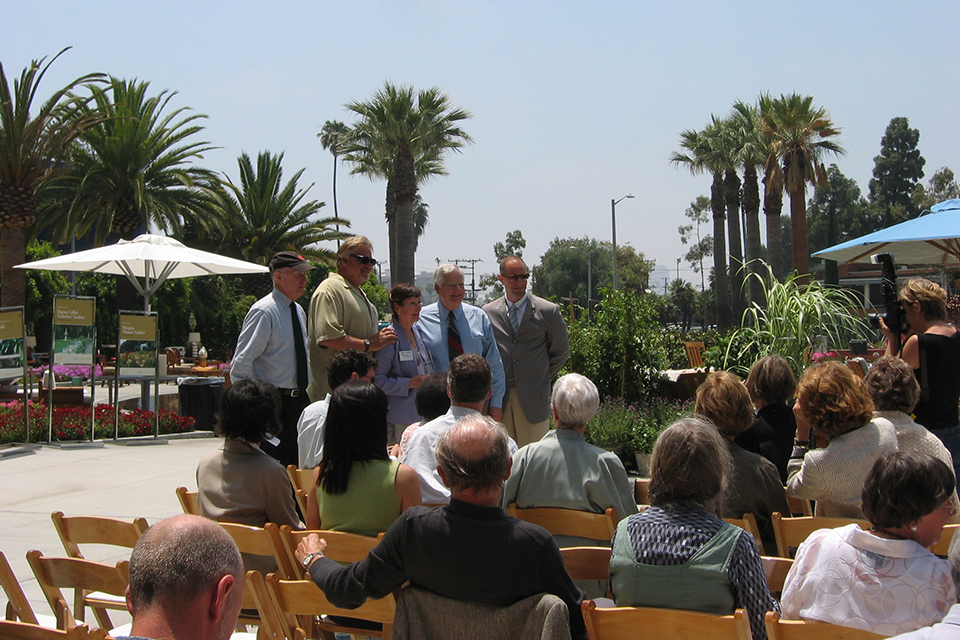 Launch of Spotlight on the Garden, Pacific Design Center, Los Angles, CA, 2006. Photo courtesy The Cultural Landscape Foundation.
Launch of Spotlight on the Garden, Pacific Design Center, Los Angles, CA, 2006. Photo courtesy The Cultural Landscape Foundation.
In 2007 the Highland Park City Council voted unanimously to designate the entire property a historic landmark, its first designation undertaken without the consent of the owner (Orren Pickell Designers & Builders). This designation, which would require any changes to the site to first be approved by the Council, led Pickell to give up his plans to subdivide the property. Instead, he sold the estate (through a land trust) to private owners, who intend to preserve and protect the property – keeping it intact for at least for another generation. The Becker Estate was among the earliest National Register designations recognized for Jensen’s landscape architectural contributions. The Becker Estate, along with Columbus, Douglas, Dvorak and Garfield Parks, are some of the Jensen-designed landscapes included in the digital What’s Out There Cultural Landscapes Guide to Chicago.
Selected Resource
Chicagoans Celebrate Spring Thaw During What’s Out There Weekend
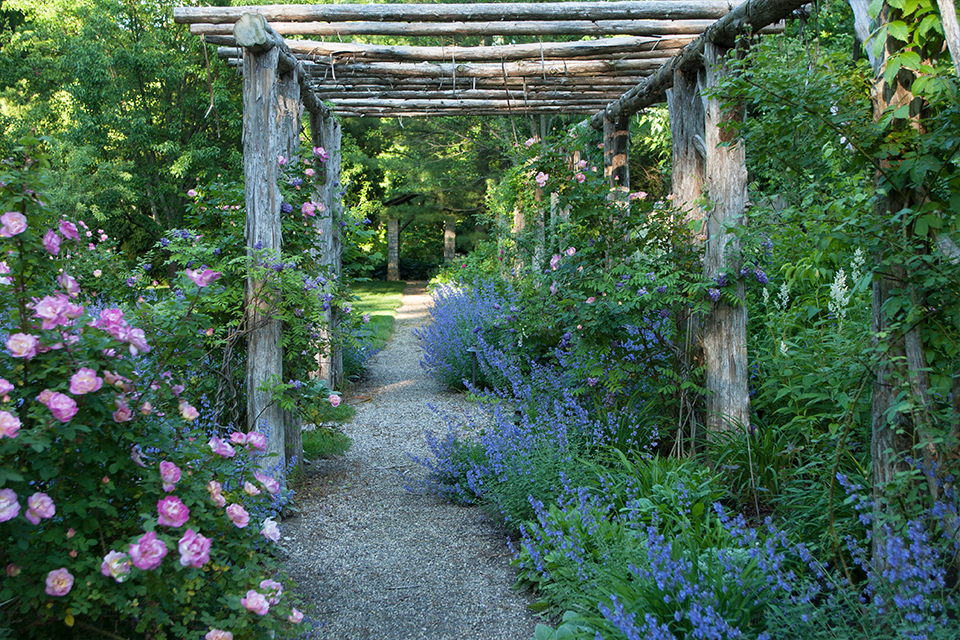
-
Becker Estate, Highland Park, IL, 2012. Photo courtesy Hoerr Schaudt.
